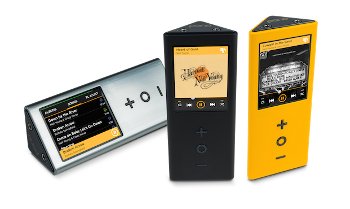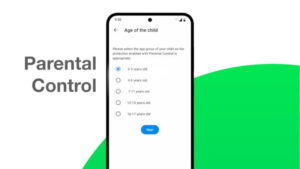Neil Young’s long promised high def music device, Pono, is out and I am jammed. Not that I’m ever going to be able to buy one, mind you. But if I were entrenched middle class, the type of person who can shell out 500 bucks for a new Coach purse, I’d have one of these babies in a Texas heartbeat, which should be quicker than a regular heartbeat given the Lone Star State’s rate of high blook pressure and all. The latest news is that they’ll be available in your not-so-friendly neighborhood electronics store on Monday for $399. The Pono Music Store already went online a few days back.
 To be sure, the naysayers are everywhere, saying this pony can’t fly. They may be right.
To be sure, the naysayers are everywhere, saying this pony can’t fly. They may be right.
There’s been a lot of concern over the price of the player itself, which I don’t think is valid. Although it’s way out of my price range, four hundred bucks isn’t all that much, especially if you compare it to the twelve hundred dollar price tag on the latest Walkman unveiled by Sony at this year’s CES. If it delivers as promised, it’s worth every penny.
Evidently, it does deliver, according to Gizmodo which has tested one.
“Herbie Hancock just tickled my ears. Not kidding. Adele did too. But Herbie tickled them better. No, this isn’t some weird dream/nightmare. This is Pono. Go listen to Hancock’s “Watermelon Man” now (link here). We’ll wait. Back? What you just heard was a compressed version of Hancock’s classic. What I just heard was not, and the difference is quite dramatic (even over reasonably priced headphones).”
There have also been concerns about storage capacity, with one writer estimating that the device will “only” be able to store 1,872 tracks, or about 150 albums, which seems sufficient to me, especially since the device easily connects to a computer to swap tracks back and forth. Although the soon to be released Pono Music Center app will only be available for Windows and Mac, Linux users will be able to “sideload” the player as a USB storage device and swap tracks using a file manager.
Another complaint, and a valid one, is with the extremely limited number of albums available, which numbers 40 as I write this — a number I figure is sure to go up dramatically in the upcoming weeks and months. As you might expect, titles by Young and Crosby, Stills & Nash dominate the current offerings.
There are more serious problems to be dealt with, however, if brother Neil wants to get this project off the ground. To begin with, the cost of music is incredibly expensive, with a copy of the Foo Fighters’ “Sonic Highway” going for $17.99, or $21.79 for Mr. Young’s “After the Gold Rush.” However, it’s my guess that if the project is successful, we’ll rapidly see these prices come down, along with the price for the Pono player as well.
A more problematic issue has to do the the openness, or lack thereof, of the music codec being used. Although Pono utilizes the Free Lossless Audio Codec or FLAC, which is licensed under the GPL and BSD licenses, evolver.fm reported last August that the files won’t play with full fidelity on anything but a Pono device.
“Yes, if you want a Pono file to play properly, you’ll need to play it on the Pono device — no computers, iPhones, Androids, or high-end D/A converters for you….
“However, according to a source with knowledge of the situation, Pono files will play on any digital audio device, just at a lower sound quality (i.e. something like what most of us listen to today). In other words, you should be able to load the songs up on your iPhone — they will just lack the amped up sound that made you go with Pono in the first place.
“In that sense, Neil Young and his Pono team have figured out how to do something Spotify did for subscription music, but to sound quality: To make it “freemium.” You might be able to “borrow” a Pono file from a “friend” and play it on whatever you want — but in order to get the top-notch sound quality, you’ll need to play it on a Pono, from what we hear, and you’ll need to be the person who purchased it.”
Although I suspect this has been accomplished by way of an easy to get around sleight of hand, by merely suppressing both the very low frequencies and everything above, say, 15 khz and restoring them on playback, this might be a deal breaker for many free tech supporters.
This has already been a deal breaker for me. I would’ve been willing to open up my PayPal account and shell out $23.99 to download the first Crosby, Still and Nash album, just to give you the down low on how it sounds in its remastered high def brilliance, but not if it’s just going to sound like a standard MP3 file when played on my computer.
There’s already Spotify for that.
Christine Hall has been a journalist since 1971. In 2001, she began writing a weekly consumer computer column and started covering Linux and FOSS in 2002 after making the switch to GNU/Linux. Follow her on Twitter: @BrideOfLinux









> “Yes, if you want a Pono file to play properly, you’ll need to play it on the Pono device — no computers, iPhones, Androids, or high-end D/A converters for you….”
Deal-breaker. Any DRM or deliberate limiting of quality means this is just an expensive paperweight. My media has long been completely device and platofrm agnostic. Why go backwards?
@Mike I agree. Forget the question of what you’re going to do with all the expensive music you’ve purchased if the company which makes the only device capable of using it fully goes belly up. If you spend twenty dollars for an album (heck, even if you only spend five bucks), you should be able to take it for a walk outside the gated community.
Way over-hyped. Unless your music was recorded and mixed down to 24-bit 192kHz a 24-bit 192kHz DAC is pointless. There is no quality gained by upsampling 16-bit 44.1(CD Quality) Going from 16-bit to 24-bit just pads the bottom 8-bits with silence and upsampling 44.1 to 192 creates rounding errors and intermodulation distortion. 192 also has the potential to create signals that can damage audio equipment, most of which is designed to operate in the 20Hz – 20kHz range. If you’re like 99% of us and your audio is 16-bit 44.1kHz invest in a good 16-bit 44.1kHz DAC. It will sound better.
Jason Gray is exactly correct. A 192KHz bit rate is too low and 24 bit resolution is too rare.
CDs sound great and FLAC loslessly generates 16 bit CD quality files at perhaps half the CD file size. Obviously every 24 bit sample is 50% larger than a 16 bit sample and yields higher dynamic range, but where else other than Mr. Young’s “store” are you going to find files sampled with 24 bit DACs?
On a different, esthetic rather than technical point, that triangular shape makes the device too thick. Thin is in and the Pono is no “Air.”
You’re confusing bit rate with sampling rate. It’s not 192kbit/s it’s 192kHz. Kbit/s is a data rate. KHz is the audio sampling rate.
I see this as yet another attempt to capitalize on the myth of high-def audio. That is, the myth that 96kHz/24bit or 192kHz/24bit audio sounds better than 48kHz/24bit audio. Generally for playback 48kHz/16bit audio is capable of sounding as good as anything.
The frequency rate of the sound sample is directly connected to the actual frequency rate of the sound waves involved. Human hearing has a certain range of frequency over which it works. The extents of this range are 20Hz on the low end and 20kHz on the high end. These numbers are not average. Many people cannot hear sounds throughout this whole range, especially at the high end, and nobody ever tested can hear sounds beyond this range (a few animals can hear infrasonics, sounds below 20Hz, like elephants, and a number can hear ultrasonics, sounds above 20kHz, like dogs, but people simply can’t).
Due to the technicalities of sound sampling, to be sure to catch every sound without it “slipping through the cracks,” you have to sample at slightly more than twice the frequency of the highest frequency sound you wish to capture. This means to get perfect quality for any sound humans are capable of hearing, you need a sample rate of slightly more than 40kHz.
Audio CDs were created with this in mind, so the sampling rate that was picked for CDs was 44.1kHz (the people who invented audio CDs were neither primitive nor stupid). With the advent of recording and playing high quality sounds through personal computing devices, the sampling frequency of 48kHz began to be used because it is the simplest one to implement in that environment which is sufficient for the task (i.e., it’s easier to sample at 48kHz than 44.1kHz on a computer).
Sampling at a higher frequency than this only gives you the capability to theoretically capture and play back higher pitched sounds beyond the range of human hearing (in practice the rest of your equipment must also posses this ability). This would be similar to capturing ultraviolet light when shooting video and playing it back as ultraviolet light, which of course would be pointless to your audience, since they could not see it, and especially pointless if you monitor is not even capable of reproducing ultraviolet light, as most people’s speakers are not capable of producing sound beyond 20kHz.
Adding bith depth to you audio samples, on the other hand, allows you to capture more dynamic range. That is, it allows a greater difference between the quietest and the loudest sounds possible to record. For practical purposes, 16 bits is enough to capture the difference between the loudest and quietest sounds we would hear in music (i.e., it can cover the range between the quietest sound that is audible and the loudest one which does not cause pain). The only real advantage to recording at 24 bits is that it gives you ‘headroom’ to not set the capture volume perfectly and still fix it later on (i.e., you have room to change the volume of a recording without clipping). So pretty much all the advantage of 24 bit audio is in the editing phase.
CDs are capable of producing as good a quality sound as people are capable of hearing. 48kHz/24bit files are more than adequate for any phase of sound engineering aimed at a human audience.
Of course there are other factors involved in music quality (like actual lossy compression, digital to analog conversion, and adequate power). The developers of Pono are quite aware of this; they are exploiting those other factors to create poor quality playback for other devices to make their equipment look good.
I’m not sure where you got the information for the FLAC file being DRM or limited quality, as the store and its files weren’t even available for download until at least October. I can play the files with any device, including computers with no issues, and Neil has repeatedly mentioned these FLAC files are DRM free because they wanted it that way.
Also, where did you get the number of Albums available? The Pono store has over 2 million tracks and counting. If your going to post information, please double check your information, so your not spreading falsehoods and untruths.
“Pono files will play on any digital audio device, just at a lower sound quality (i.e. something like what most of us listen to today.”
this was a quote from a VERY inaccurate article from Revolver, and is not true. Well, not in the sense you’re making it out to be. The files are FLAC – Free Lossless Audio Codec. There’s no DRM, no special technology to make the files proprietary. Pono went with one of the most documented and DRM-free formats on the planet. Google it. They don’t play on an iDevice, but there are free converters to ALAC, Apple’s proprietary equivalent of FLAC.
I think the point is that there are a lot of portable devices that can play FLAC files, but the vast majority of them are hamstrung by poor hardware and software, and will not achieve the quality of the Pono player. I’ve done side-by-side tests with FLAC (Android Note 3 phone, FIIO X1 player, and Pono) as well as ALAC (iPod 4th gen, iPad Air, and Pono) and the Pono player consistently and noticeably sounds better. If I had to guess at the reasons why, it’s a superior DAC (digital/analog converter) with excellent analog amplifiers. It really exposed to me the limits of the “all-in-one” devices that happen to play music.
So back up, take a breath, and check your facts from multiple sources. What you’re speculating on and scaring people is simply not true.
You can get a HiFimeDIY Sabre U2 Asynchronous USB DAC for about $65 and plug it into your phone and it would more than likely sound just as good, maybe better.(I have HIFIMEDIY SABRE TINY USB DAC and it sound darn good.)
The Pono is a over-hyped ripoff that preys on “Audiophiles” that are long on money and short on basic digital audio theory knowledge. It’s pure snake oil. The same people that buy into the 24-bit 192kHz stuff are the ones that spend hundreds if not thousands of dollars on speaker wire to avoid “skinning.” But I guess if they want to waste their money?
@Jason Gray on 9 Jan 2015: Yes, you’re right again. 192 KHz is a frequency, not a sample size. My bad.
The Pono seems targeted at people who will spend over a thousand dollars for a 15 watt monophonic tube amplifier.
CD quality is good enough for me. Ripping a CD to a FLAC file is all I need; same quality, smaller file size. There just aren’t enough portable players with lots of storage that play FLAC files.
Although ALAC is now open source and royalty free, Apple leaves a bad taste in my mouth. iAnything? Nein danke.
Well, if Pono doesn’t really do anything to stop the files from being played at full quality elsewhere, then it’s not such a bad thing. Some would be willing to pay as much as it costs just for a really high quality digital to analog conversion and sufficient power to drive higher impedance earphones. Of course, the “high definition” audio is still a myth.
Glad to hear there is no DRM. The quote in the article made it sound like there was. That said, I don’t see myself owning one of these. I need fewer devices, not more.
If Neal Young gets nothing else from Pono, the fact that he’s got it together this far gives him newfound cred as a musician, which is a boost to the old hippie we’re-not-dead-yet crowd looking for relevance in a world they helped create.
Not that he needed it.
But maybe now his music will be revisited on the radio, not just his classic catalog, but his new stuff as well. The kids growing up could really benefit from hearing great new music outside the confines of 21st century pop.